Home »
Misc »
How to draw fouls in basketball
How to draw fouls in basketball
Drawing Fouls In Basketball
Home>Sports>Basketball>Coaching Basketball
PreviousNext
Fouling has always been a major part of the game of basketball, and so has drawing fouls. Drawing a foul is inducing the opponent to foul, which can lead to a turnover, free throws, or simply just add to a team’s foul count. Due to all those penalties, drawing fouls is something players are doing each time more, and are getting better at it. Check out some of the ways players draw fouls:
Table of Contents
- Jumping into a defender
- Hooking arms with a defender
- Kicking out legs on a shot attempt
- Taking a charge
Jumping into a defender
One technique to draw a foul in basketball is jumping into a defender. This happens after the offensive player pump fakes a jump shot and the defender flies at them. Then the offensive player will jump into the defender to initiate the contact to try to receive a foul call from the officials.![]() players who do this often are Dwyane Wade, a three-time NBA champion, and James Harden, NBA MVP.
players who do this often are Dwyane Wade, a three-time NBA champion, and James Harden, NBA MVP.
Hooking arms with a defender
Another technique to draw a foul is when the offensive player hooks arms with the defender and tries to shoot it to show that the defender initiated the contact. The offensive player will use this technique when driving to the basket against a defender going in for a layup. They will try to draw shooting fouls with this technique, so they are awarded free throws by the referee. James Harden is again a prime example of using this foul-drawing practice.
Kicking out legs on a shot attempt
Another one of these foul-drawing techniques is when the offensive player is shooting a shot and kicks out their legs in an attempt to draw contact from the opposing defender. Most shooters have kicked out their legs in an attempt to draw fouls and receive free throws from the officials. Shooters such as Ray Allen, Jamal Crawford and Stephen Curry have been known to use this practice to try to draw fouls when shooting three-point shots.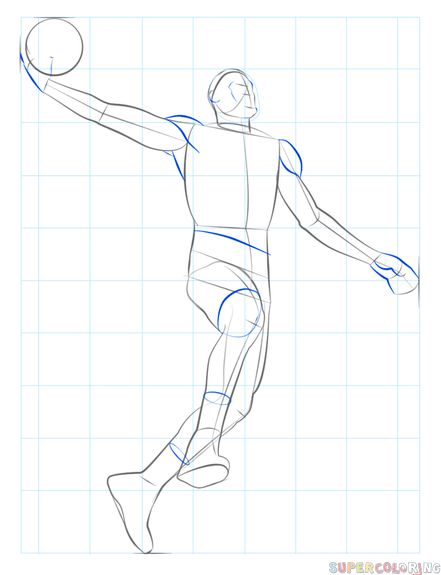 They kick out their legs to initiate the contact from the defender to get the call. Only the best of the best shooters can practice this trick ever so subtly so they don't get caught by the officials.
They kick out their legs to initiate the contact from the defender to get the call. Only the best of the best shooters can practice this trick ever so subtly so they don't get caught by the officials.
Taking a charge
Taking a charge is also a way of drawing a foul, only this time when defending. In taking a charge the player will stand still, with both feet on the ground waiting for the offensive player to make an excessively strong contact. The player defending player usually falls back, enhancing the play and making it more believable for referees to make the call.
When drawing fouls players must be careful not to flop. The NBA has fined many players for flopping, and the flop is negatively seen by players around the league.
PreviousNext
Pages Related to Drawing Fouls In Basketball
- Diamond Press Basketball
- Full Court Press Basketball
- Double Team Basketball
- Give And Go Basketball
- Four Corners Offense Basketball
- Contact In Basketball
PreviousNext
Good Moves to Draw a Foul in Basketball | Live Healthy
By M.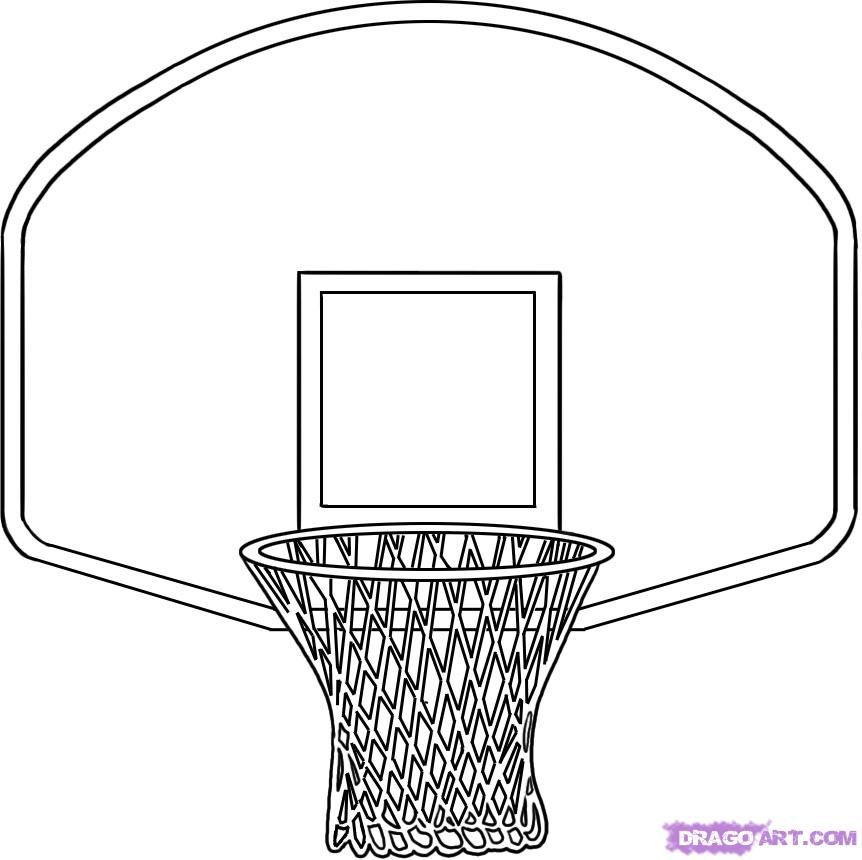 L. Rose
L. Rose
In basketball, you’re always looking for a way to create an advantage that can tip the game in your favor. Drawing fowls is a simple but effective way to give you the edge you need. If you're fouled while shooting it you'll have a chance to score from the free-throw line. Additionally, you can place opposing players in foul trouble, potentially forcing them out of the game. In general, aggressive offensive moves are most likely to draw fouls.
Driving to the Hoop
The simplest, most direct way to try to draw a foul is to beat your defender off the dribble and drive straight to the rim. First, the beaten defender may reach back and foul you as you blow past him. Second, other defenders will try to move into your path to block your route to the basket, and defenders who are moving are more likely to foul you because they’re not in set defensive positions. You have numerous options to try to beat your defender off the dribble. Your move can be as simple as head-faking in one direction then dribbling in the other, or as complex as executing a behind-the-back spin move.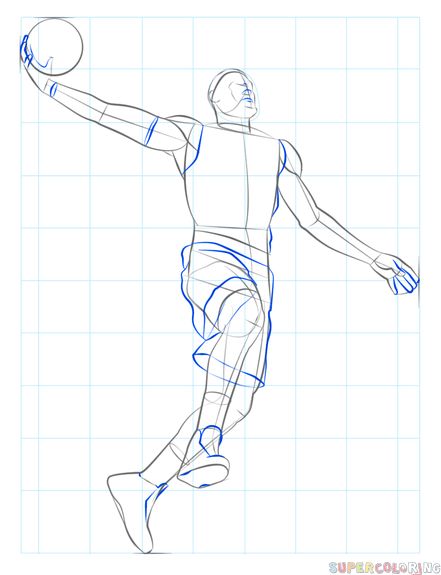 Once you beat your defender, go hard to the rim.
Once you beat your defender, go hard to the rim.
Pump Fake
The pump fake lets you draw a foul while attempting a shot. Execute the fake by placing your hands on the ball as if you were going to shoot, then raise the ball quickly into a shooting position. If your defender is a step or two away, he may jump up and toward you as you fake the shot, causing him to hit you as he descends. In some cases, you can also draw a foul by leaning slightly forward or to one side as the defender comes down, forcing him to contact you. If you move too far into the defender’s path, however, the referee isn’t likely to blow the whistle.
Forcing a Reach-In
Forcing a reach-in, also known as a rip move, is another deceptive tactic designed to draw a foul. Hold the ball low with both hands, in front of you or a bit to the side, to entice the defender to try to slap the ball away. As he reaches toward the ball, lift your arms and take a shot, forcing contact with the defender’s arms.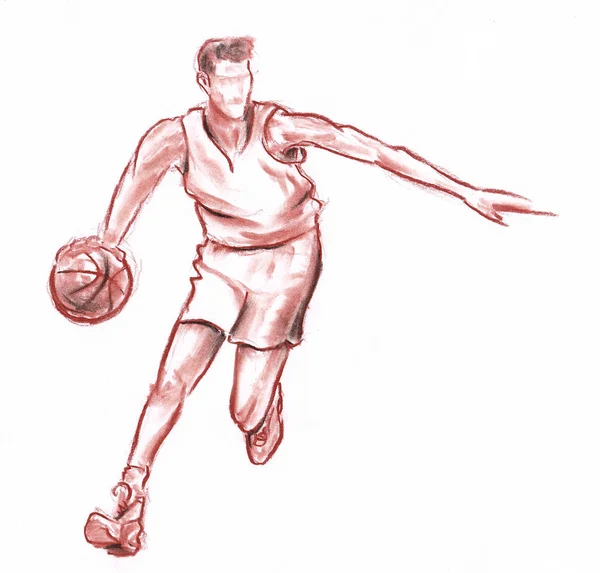 If you’re fortunate, your shot will go in and you’ll get a free throw as well.
If you’re fortunate, your shot will go in and you’ll get a free throw as well.
Taking a Charge
Defenders can also draw fouls. If a player beats one of your teammates off the dribble and drives to the basket, you can take a charge by moving into the opponent’s path and setting both feet before the opponent arrives and runs into you. But be aware of the half-circle under the hoop area in some levels of basketball. Both your feet must be outside the half-circle if you wish to take a charge.
Resources
- YouTube: Kevin Durant Hits the 3-Pointer and Draws the Foul
- YouTube: NBA: Paul Pierce Pump Fakes to Draw Contact for the Foul and Knocks Down a Three
- YouTube: TNT: Ginobli Takes the Charge on Carmelo at the Buzzer
Writer Bio
M.L. Rose has worked as a print and online journalist for more than 20 years. He has contributed to a variety of national and local publications, specializing in sports writing. Rose holds a B.A. in communications.
in communications.
Basketball rules: gestures of judges in basketball
Hello, dear visitors of the site " Basketball Lessons ". Today we will talk about one of the integral parts of the refereeing process in a basketball game - the gestures of the referees. Basketball referees gestures serve to explain to both the spectators and table officials what point of the basketball rules was violated, by whom it was violated and what sanctions the player who violated the rules will incur.
This article was written using FIBA official rules of 2010, which are currently the basis for all professional basketball tournaments in territory under the control of the International Federation of Basketball Associations. To quote these rules: “The signs given in these Rules are the only official signs. They must be used by all referees in all games. It is important that table officials are also familiar with these gestures.”
We will begin the story about the gestures of basketball referees with the gestures that indicate shots on the ring , successful throw attempts, as well as an indication of the number of points scored.
Rules of Basketball: referee gestures - throwing the ring
The next series of referee gestures affects everything that is somehow connected with playing time. Basketball Rules: Basketball referee gestures on playing time
Administrative gestures of basketball referees are related to substituting one player for another, inviting a player to the court, announcing a timeout, as well as visual demonstration of the countdown (five seconds and eight seconds) . In addition, there is a gesture that is used to communicate between referees and table officials. Basketball rules: administrative gestures of referees
The next group of gestures, which includes eleven types of gestures, is designed to demonstrate to the spectators and table officials which rules of basketball were violated in this particular episode. Referee signal will tell us if the player had a run or used an incorrect dribble (double dribble, carry), if the player was too long in the three-second zone or did not have time to put the ball into play, if the kick was intentional or if the player fouled a rule zones.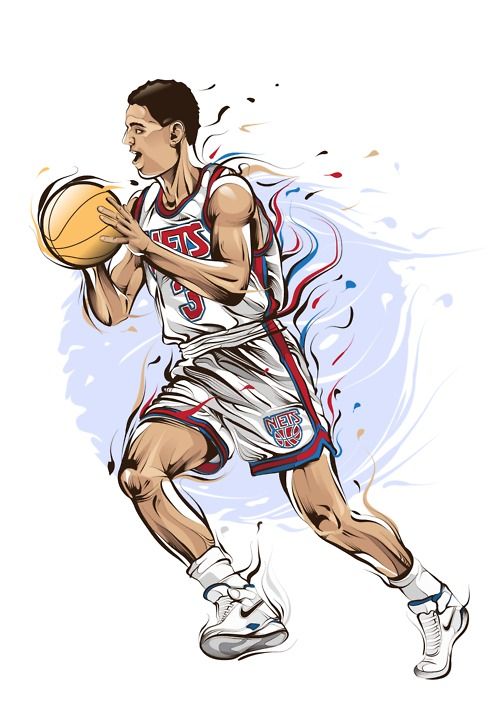 Basketball rules: gestures of basketball referees violation of the rules
Basketball rules: gestures of basketball referees violation of the rules
Okay, the player violated basketball rules (committed a foul) and the referee noticed it. Now he must fully inform the referee's table about this. The whole procedure consists of three steps. The first step is to notify the table officials of the number of the offending player. Rules of Basketball: Referee Informing Gesture
The second step is to demonstrate what type of foul has occurred: misuse of the hands, collision with a player in possession of the ball or a player without the ball. Also, in certain situations, the referee may call a double foul, technical foul, unsportsmanlike foul or even a disqualifying foul.
Rules of Basketball: Foul Type Gesture
Finally, the referee's third step is to announce the number of free throws awarded (one, two or three shots). If the violation of the rules does not involve free throws, then the referee must indicate the direction for the continuation of the game.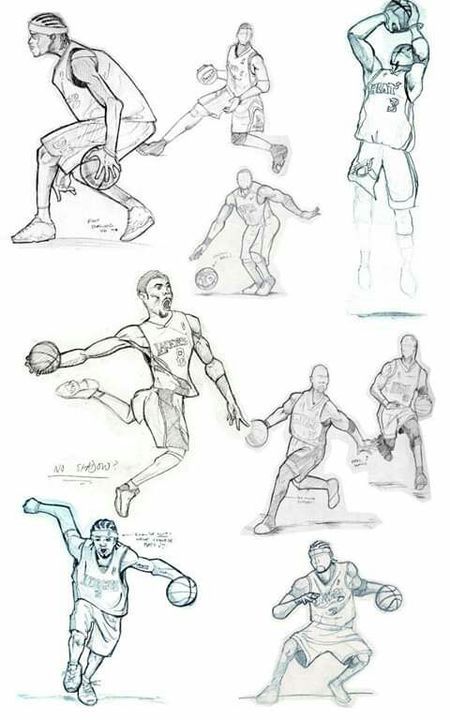 Rules of Basketball: Punishment for Violations of the Rules Rules of Basketball: Punishment for Violations of the Rules
Rules of Basketball: Punishment for Violations of the Rules Rules of Basketball: Punishment for Violations of the Rules
So, the referee has already shown the type and type of violation of the rules and determined the punishment for him. The last group of gestures of basketball referees refers directly to the performance of free throws (free throws). Moreover, the type of gesture differs depending on whether the referee is inside the restricted area or outside it. Rules of Basketball: Free Throws Rules of Basketball: Free Throws
This is the end of the article devoted to such important elements of basketball as referees' gestures. Thanks to it, without the help of a commentator (especially in English-language broadcasts), we will be able to figure out who and for what violation of the rules of the game of basketball was assigned a personal note; we will see how the referee, who is on the site, addresses his colleagues, who are at the referee's table, with gestures. Now - the body language of arbitrators can become an open book for us.
Now - the body language of arbitrators can become an open book for us.
By the way, on the subject of gestures of basketball referees - one very funny video.
[youtube]9dSMG1FTSjg[/youtube]
Good luck with your training and see you soon on the pages of this site!
Live and dead ball in basketball: offensive foul
To fully understand the rules of the game, you need to understand what a foul in basketball means. This concept refers to a violation of the game rules caused by unsportsmanlike behavior or physical contact with a representative of the opposing team. A foul is assigned by the referee to the offending basketball player.
- The degree of punishment is determined by the provisions prescribed in the rules of the game.
- Understanding the inevitability of personal contact, for which fouls are given in basketball, is of great importance.
- Since there are 10 players on the field at the same time, collisions will certainly occur.
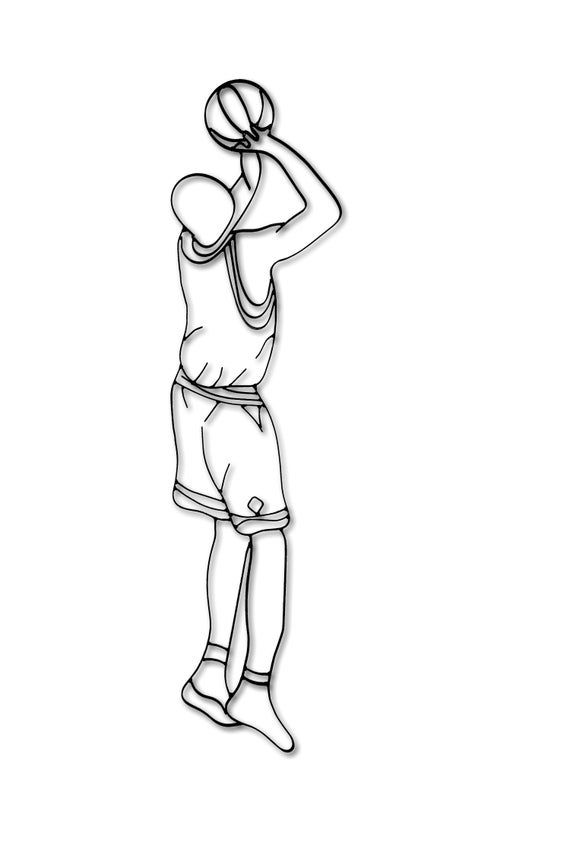
By definition, which follows from the rules, one can briefly understand when the sentencing occurs. Knowing this, one of the player's tasks will be to avoid a foul. Many are interested in how many fouls are removed from the field. In basketball, after 5 personal fouls, the player must withdraw from the game. For the NBA, this figure is 6 fouls.
Given how many fouls a basketball player can get, if there are a lot of fouls, the coach will usually bench the player to prevent him from being sent off.
It is also worth knowing how many substitutions can be made in basketball. In general, the rules of the game do not limit the number of substitutions, but a substitution can only be made when the ball is dead or play is stopped. In this regard, it is convenient for the coach to save his players from removal from the court.
The rules of the game provide for a huge number of varieties of personal remarks. The main ones are:
- A double foul is awarded when both contacting players have committed fouls at the same time.

- Technical foul - a violation that is not called due to contact with the opponent, but is issued for unsportsmanlike behavior.
- An intentional foul is committed intentionally by an athlete.
- Team foul - a violation that is assigned to the entire team.
- A disqualifying foul is issued for serious misconduct and results in the removal of a player from the field.
- A personal foul is issued to the specific player who committed the violation.
- An unsportsmanlike foul is awarded if the referee considers that the player did not properly participate in the rally.
- Offensive foul - Interfering with a player during an attack on the hoop.
The presented types of violations are the main ones in the game and occur in almost all matches, regardless of the tournament or league.
Some excerpts from the official basketball rules.
Basketball is played by two teams, each with five players. The goal of each team in basketball is to shoot the opponent into the basket and prevent the other team from getting the ball, and shoot it into the basket.
The winner in basketball is the team that has scored the most points at the end of playing time.
The basketball court must be a flat rectangular hard surface without any obstacles. Dimensions must be 28 meters long and 15 meters wide.
Basketball backboards must be made of an appropriate transparent material or painted white. Basketball backboards must measure 1.80m horizontally and 1.05m vertically.
Basketball hoops must be of strong steel, with an inner diameter of 45 cm. The hoop bar must have a minimum diameter of 16 mm and a maximum of 20 mm. On the bottom of the ring there should be devices for attaching nets.
The basketball must be spherical and orange in color with the traditional pattern of eight inlays and black stitching. It must be inflated to such an air pressure that, when dropped onto the playing surface from a height of about 1.80 m, measured from the bottom of the ball, it will rebound to a height, measured to the top of the ball, of not less than about 1. 20 m and not more than about 1.40 m. The circumference of the ball must be at least 74.9cm and not more than 78 cm. The weight of the ball must be not less than 567 g and not more than 650 g.
20 m and not more than about 1.40 m. The circumference of the ball must be at least 74.9cm and not more than 78 cm. The weight of the ball must be not less than 567 g and not more than 650 g.
According to the rules of basketball, the game consists of four periods of ten minutes with breaks of two minutes. The duration of the break between halves of the game is fifteen minutes. If the score is tied at the end of the fourth period, the game is extended by an additional period of five minutes, or by as many periods of five minutes as necessary to break the balance in the score. The teams must switch baskets before the third period. The game officially begins with a jump ball in the center circle when the ball is legally tapped by one of the jumpers.
In the rules of basketball there is the concept of a live and dead ball.
The ball becomes live when:
- During the jump ball, the ball is correctly hit by one of the jumpers.
- During a free throw, the referee places the ball at the disposal of the player taking the free throw.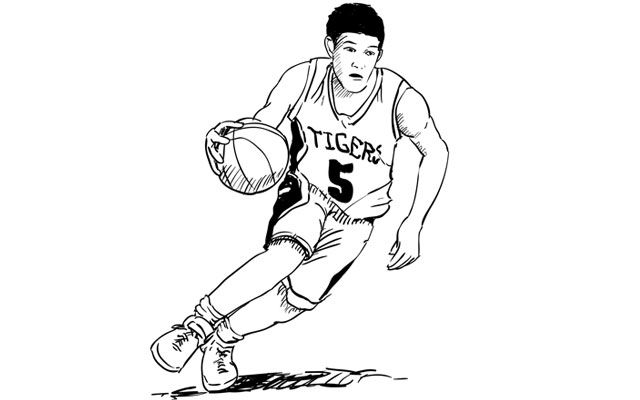
During a throw-in, the ball is at the disposal of the player taking the throw-in.
The ball becomes dead when:
Any ball scored for a field goal or free throw.
The referee's whistle sounds when the ball is live.
It is clear that the ball will not enter the basket on a free throw followed by:
Another free throw.
- Further punishment.
The signal sounds for the end of each game period or extra period.
The device alarm sounds for 24 seconds when the ball is alive.
A ball that is already in flight at the shot for the basket is touched by a player of either team after:
The referee blew his whistle.
- The time period or additional period has expired.
Device beep sounded for 24 seconds.
The ball does not become dead and the field goal, if true, is valid when:
The ball is in flight on a shot from the court when the referee blows his whistle or the game clock or 24 seconds signal sounds.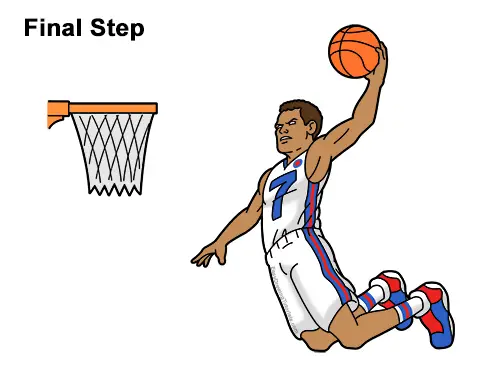
The ball is in flight on a free throw when the referee blows his whistle for any infraction other than that of the player taking the free throw.
An opponent commits a foul while the ball is still in control of a player who is in the process of shooting for the basket and who ends his shot with a continuation of the motion that started before it was taken.
In basketball, the ball is played only with the hands. Running with the ball, intentionally kicking it, blocking it with any part of the foot, or punching it is a foul. Accidental contact or touching of the ball with the foot or leg is not a violation.
The shooting process begins when a player makes a normal movement prior to that throw and, in the opinion of the referee, he has started an attempt to score the ball into the opponent's basket with a shot, a throw or a rebound. The throwing process continues until the ball leaves the thrower's hands. Sometimes the opponent holds the thrower's hands in such a way that he cannot release the ball, however, even in this case, in the opinion of the referee, the player may attempt a throw.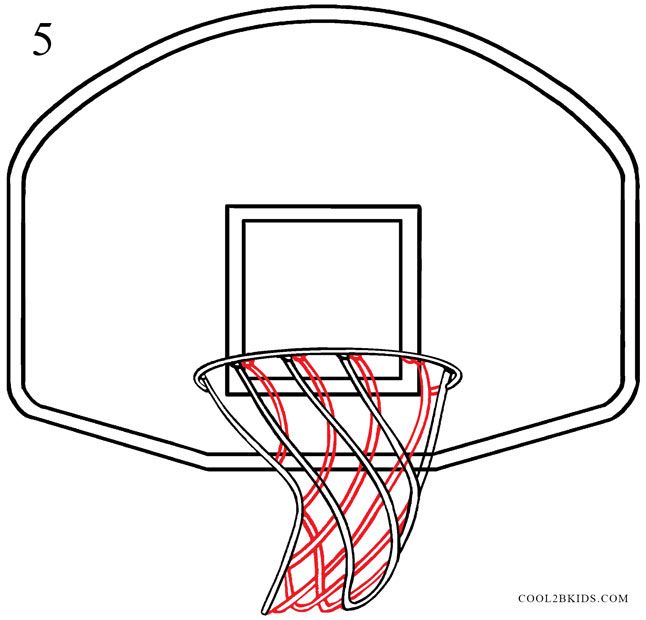 In this case, it doesn't matter if the ball has left the thrower's hands. There is no relationship between the number of steps taken correctly and the throwing process.
In this case, it doesn't matter if the ball has left the thrower's hands. There is no relationship between the number of steps taken correctly and the throwing process.
In the case of a jump shot, the throwing process continues until the shot attempt is completed (i.e. until the ball leaves the thrower's hand and both feet of the player touch the floor.
For a foul to be committed against a player in the act of shooting, the foul must occur, in the judgment of the referee, after the player has begun continuous movement of the arm and/or body in an attempted field goal.
Continuous motion:
- Starts when the ball is in the player's hands and the throwing motion, usually upward, has already begun.
- May include hand and/or body movement used by a player in a field goal attempt.
- Ends if a new move is made.
If the criteria for continuous movement listed above are met, the player is considered to be in the act of shooting.
A goal scored from the pitch is credited to the team attacking the basket into which it is scored as follows:
- One point is scored for a free throw goal.
- For a goal scored from the field, two points are counted from the 2-point zone.
- Three points are scored for a ball thrown from a 3-point zone.
If a player accidentally shoots the ball from the court into his own basket, the points are recorded to the opposing captain.
If a player deliberately shoots the ball from the court into his basket, it is a violation and no points are scored.
If a player causes the ball to enter the basket from below, it is a foul.
A player is out of bounds when any part of his body touches the floor or any object other than a player on, over or behind the boundary lines.
The ball is out of bounds when it touches:
- A player or any other person who is off the court.
- The floor or any other object on, above or behind the bounding lines.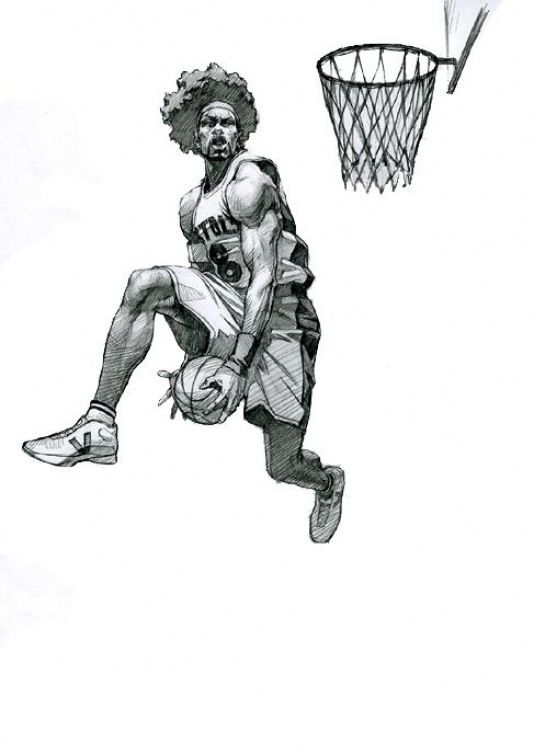
- The structure supporting the shield, the back of the shield, or any object above and/or behind the shield.
Under basketball rules, a dribble begins when a player who has gained control of a live ball on the court throws, hits or rolls it on the floor and touches the ball again before another player touches it. The dribble ends when the player touches the ball with both hands at the same time or allows the ball to be held in one or both hands. While dribbling, the ball may be thrown into the air provided that the ball touches the floor before the player touches the ball again with his hand. There is no limit to the number of steps a player can take when the ball is not in contact with his hand. A player who accidentally loses and then regains control of a live ball on the court is considered to have committed an accidental turnover.
A player must not dribble a second time after his first dribble has ended, unless this is after losing control of a live ball on the court due to:
basket shots,
ball touched by an opponent,
passes or accidental loss of the ball which is then touched or touched by another player.
Running is the illegal movement of one or both feet in any direction while in control of a live ball on the court, beyond the limits set out in this article.
A turn occurs when a player has a live ball on the court and steps one or more times in any direction with the same foot while the other foot, called the pivot foot, maintains its place of contact with the floor.
If the player then slides, rolls, or attempts to stand up with the ball in their hands, it is a foul.
A player must not remain in the opponent's restricted area for more than three consecutive seconds while his team is in control of a live ball on the court and the game clock is running. An exception must be made to a player who:
- Attempts to leave the restricted area.
is in the restricted area when he or his teammate shoots and the ball has left or is leaving the thrower's hands.
- Being in the restricted area for less than three seconds, dribbles the ball in order to shoot.
Whenever a player gains control of a live ball in his backcourt, his team must bring the ball into their frontcourt within eight seconds.
Whenever a player gains control of a live ball on the court, a shot attempt must be made by his team within twenty-four seconds.
A foul is an infraction of the rules due to personal contact with an opponent and/or unsportsmanlike conduct.
These are just some important excerpts from the basketball rules. In general, the official basketball rules of the International Basketball Federation are a large one hundred-page manual that outlines all the nuances of the rules.
On average, a basketball team makes 65-70 basket shots and up to 20-25 free throws per game. At the same time, the preparation for the throw itself is the main content of the entire game. But getting into the basket is the main goal in basketball. There are several types of throws for different positions and situations. During the game you can observe their diversity. At the same time, each player has his own technique, both dribbling and throwing the ball. All of this combined with a healthy competitive feel makes for a spectacular show.
At the same time, each player has his own technique, both dribbling and throwing the ball. All of this combined with a healthy competitive feel makes for a spectacular show.
Basketball throws
1. Throw with two hands from the chest
This type of throw is actively used to throw the ball into the basket, mainly from long distances. Also, such throws take place in the absence of active opposition from the defender of the other team. In preparation for such a throw, the ball is clasped with the fingers of both hands, after which it is carried to the level of the face, when the arms are straightened, the ball is sent to the basket along a given arc. If all the calculations of the player are correct, and the throw is accurate, then the ball will fly straight into the opponents' basket.
2. Throw with two hands from above
This type of basketball shot is used from medium distances. Also, this throw is relevant when the opponent is closely guarded.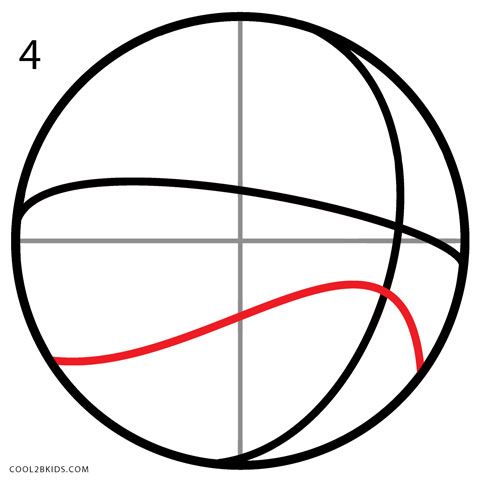 To perform a throw of this kind, the ball is carried overhead, while the arms are slightly bent at the elbows, when the arms are straightened, the ball is sent to the basket. During the straightening of the arms, the ball is given the necessary acceleration and trajectory, allowing it to hit the target exactly - into the "enemy" basket.
To perform a throw of this kind, the ball is carried overhead, while the arms are slightly bent at the elbows, when the arms are straightened, the ball is sent to the basket. During the straightening of the arms, the ball is given the necessary acceleration and trajectory, allowing it to hit the target exactly - into the "enemy" basket.
3. Throw with two hands from below
This type of throw is actively used in the game during a quick pass to the backboard, as well as during basket attacks in a long jump. To shoot, the player takes the ball in motion under the foot, after which he takes a wide step and makes a jump. With straight arms, the basketball player throws the ball into the basket, while fully extending his body. When straightening the arms, acceleration is given, due to which the ball flies into the basket. It is also extremely important to land correctly after performing this maneuver.
4. Throw with one hand from the shoulder
This is one of the most common types of ball throws in basketball.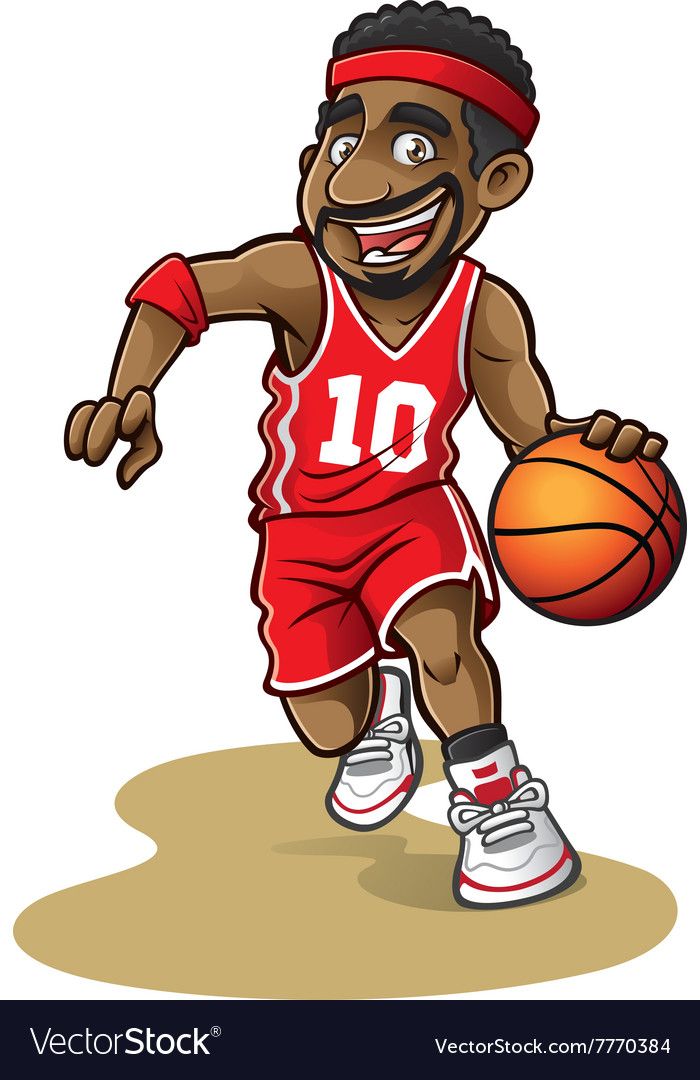 Applicable at medium and long distances. In this case, the player holds the ball in his right hand at head level, while straightening his arm, the ball goes into the basket.
Applicable at medium and long distances. In this case, the player holds the ball in his right hand at head level, while straightening his arm, the ball goes into the basket.
5. One hand overhand throw
This type of basketball shot is used quite often to attack on the move from close range and also from under the backboard. In preparation for the throw, the ball is placed under the right foot. At the highest point of the jump, the player's arm is extended and the ball is pushed into the basket by the fingers.
6. Throw with one hand from above - “hook”
This type of throw is used by the central players to attack from close and medium distances. To throw, the player turns his left side to the shield, pushes off with his left foot, makes a jump, while the right hand with the ball rises in an arcuate motion and throws it into the basket.
7. Finishing the ball
When the ball is rebounded from the backboard, in case of an unsuccessful attack of the basket, the player can catch the ball and throw it into the basket again.
All statistics are current as of February 9, 2019
In the last big article about floaters, I already wrote that one of the reasons why there are more and more floaters is the increase in the number of passes (drives). The pass itself gives many advantages: it allows you to complete attacks with shots from the “highly effective” zone under the basket, “draw” fouls on the opponent and get the most effective shots in the game - free throws. The passage forces the defensive defenders to shrink into the paint, which opens up opportunities for a pass to open partners and subsequent throws without resistance.
When passing, the player must evaluate many factors that positively / negatively affect the final result (complete the attack with a set of points), and sometimes make the passage impossible at all. To begin with, the player must find the space where he will actually make the passage. The “quality” of this space depends on whether it is on the “strong” or “weak” side, a pass will be made under a strong or weak hand (for a right-hander, a strong hand is right, a weak one is left, for a left-hander, vice versa), are there options for protective safety net in the direction you are going to go.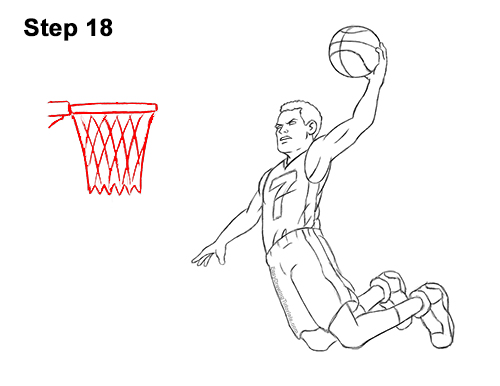
Loading…
It would also be nice to beat your defender. You can try to do this in many ways: go ahead if you have a mismatch and the defender is inferior to you in size (bull-rush), try to unbalance him with quick dribbling and the same quick stop (stop-n-go), show a fake throw ( pump fake), make a crossover (transferring the ball from one hand to another with a change in movement), etc. The first step is very important, it must be long, strong and fast in order to gain an advantage over your opponent already on it.
On passes, you are usually in close contact with one and surrounded by several other defenders. In such situations, it is important to "protect" the ball, from loss or block. In order to prevent you from being knocked out on a dribble, you can use the following two techniques:
- After finishing dribbling, take the ball with two hands (one on top of the ball, one on the bottom), similar to American football runners. So knocking the ball out of you without a foul will be very problematic (the main thing is not to take extra steps so as not to get a run).

videos from 0:29
- Passing the ball overhead. Usually when passing, defenders concentrate "down" in order to interfere with your dribbling and clear the ball. Therefore, raising the ball to head level will be unexpected for the opponent. Combined with a change of direction (like a Eurostep) this will not only help protect the ball from interception, but also beat the defender so that he cannot recover position and prevent you from shooting.
Loading…
Video from 2:40
Also, as you will see later in the data, it is important to be able to finish attacks well from under the ring. First of all, you need to throw layups well and correctly (because these are the most popular throws during passes), as well as assess the situation on the site in order to choose the right type of throw.
There are 4 types of attack completion with the help of a layup:
- Normal lay-up: The most standard and simplest type of lay-up, good for when your own defender is beaten and no one comes out to secure him (big players finish such passes with a dunk).
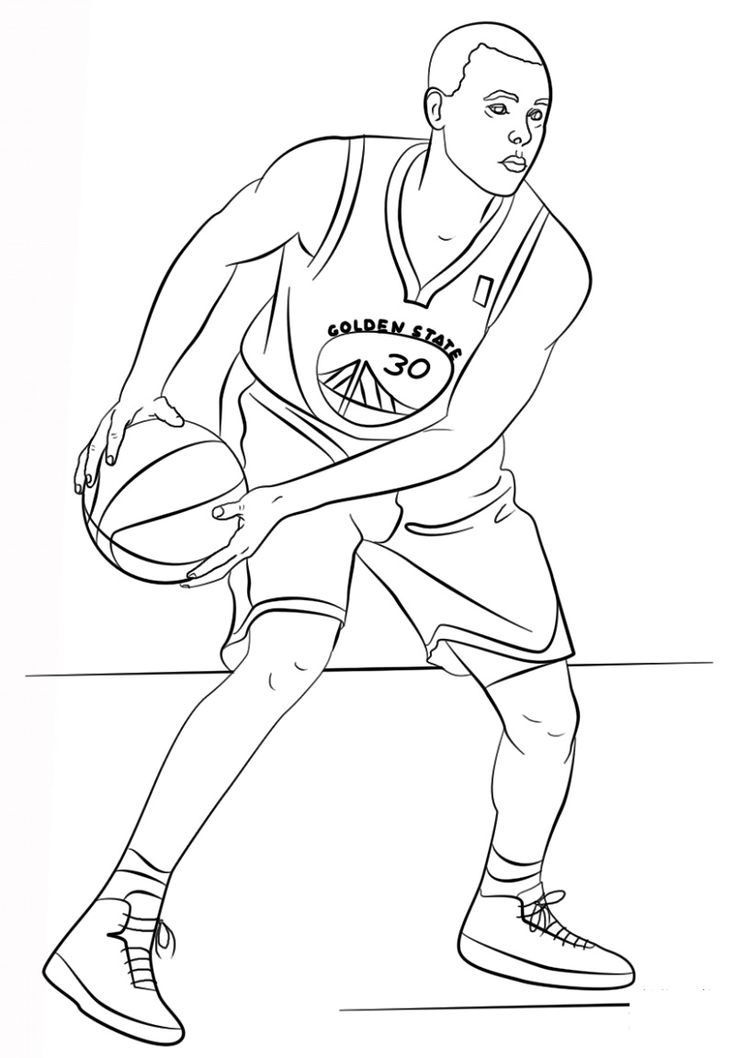 Here, the side of the court, the side of the finish with respect to the ring, and the hand you throw with are the same, i.e. when passing to the right side, you throw with your right hand on the right side of the ring.
Here, the side of the court, the side of the finish with respect to the ring, and the hand you throw with are the same, i.e. when passing to the right side, you throw with your right hand on the right side of the ring. - Inside hand lay-up: Translates as "layup with the inside hand", but it's something from the Space Jam, it's probably more correct to say about the throw with the inside hand to the ring. Can be used when a defender is behind you, but still in close proximity, so it can block your throw. In this case, throwing with the near hand will create additional distance between the ball and the defender in the form of your body and arm length, making it very difficult to block without a foul. Here the hand changes, i.e. when passing to the right side, you throw on the right side of the ring, but with your LEFT hand.
- Reverse lay-up. Using the previous version of the layup becomes dangerous if you get a safety net from the weak side. In this case, we just fly past the defender and finish on the other side of the ring.
 When passing from the right side, we throw from the left side of the ring with the left hand.
When passing from the right side, we throw from the left side of the ring with the left hand. - European reverse lay-up. This is the completion of the passage on the right side with a throw from the left side of the ring with the right hand with a turn of the body. Technically not the easiest element, but it is useful to use when there is a safety net against a mustache. The goal is the same - to fly past the defending defender and throw without resistance.
You can watch all 4 types in the video below, starting at 4:01
Loading…
The presence of a safety net is one of the most unpleasant moments during the passage. For the best protection against this, you should, as mentioned above, clearly fix the ball after the last dribbling, cover it, use reverse lay-ups and floaters. Ball fake can also help, i.e. showing a pass, for example, to a player who was "thrown" by the insurer. This will "freeze" his movement towards you, which will give you the opportunity to calmly throw on the ring. In the case of continuing the movement, you can already make a non-fake pass for an open throw, so the ability to competently pass and see the court well is also important.
In the case of continuing the movement, you can already make a non-fake pass for an open throw, so the ability to competently pass and see the court well is also important.
When playing 1-on-1 against your opponent, the ball must be kept on the “outside”, i.e. far hip from the defender, thus covering the ball with the body. When you have passed your defender, you can take a step towards him to provoke contact. This is done in order to unbalance the defender and with your repeated jerk to the ring, he could no longer resist you, as well as to provoke a foul. In general, the ability to "draw" fouls is a very important component of the game in the aisles, because. gives you the opportunity to perform the highest quality shots in the game, free throws. The opponent, in turn, receives an extra foul, which may affect his aggressiveness in defense in the future.
With the introductory part about the passages finished, now let's go directly to the numbers.
Let's start with general information about throws and their types. In games played through last Sunday, there were 26,486 shots that were recorded "as shots after passes." This is almost one in five shots in the game (18%, 146449 shots in total). As you can see, throws after passes make up a significant part of all shots in games. In the play-by-play magazine on the NBA website, there are 9 types of shots after passes, but due to the small number of some of them, I combined the two categories of dunks and hooks into one Dunk shot and Hook shot, respectively. This resulted in the following seven categories:
In games played through last Sunday, there were 26,486 shots that were recorded "as shots after passes." This is almost one in five shots in the game (18%, 146449 shots in total). As you can see, throws after passes make up a significant part of all shots in games. In the play-by-play magazine on the NBA website, there are 9 types of shots after passes, but due to the small number of some of them, I combined the two categories of dunks and hooks into one Dunk shot and Hook shot, respectively. This resulted in the following seven categories:
Loading…
- Dunk Shot
- Hook Shot
- Layup shot
- Reverse layup shot
- Finger roll layup
- Floating Jump shot
- Floating Bank Jump shot
I will not dwell on the description of each in detail, information about each type of throws can be easily found on the Internet. Here is a video of one example of each type of throw.
First, let's look at the average range of each type of throw.
There is a clear division into close throws (dunks and layups) and long throws (hooks and floaters). There is nothing surprising in this, except that there is a noticeable difference of 2 feet between normal floaters and shield floaters. Perhaps this is due to the fact that the closer to the ring the player performing the floater is, the more he needs to lift the trajectory in order to avoid the block, hence the closer floaters more often hit the shield.
Loading…
Now a plot of medium accuracy.
Closest throws are predictable at the top, furthest throws are predictable at the bottom (and in general a floater is a poor throw in terms of efficiency). Also, less than 50% of the hooks reach the target. We know from the previous chart that shield floaters have a shorter average range, hence the 11.5% advantage. But what is really unexpected is the spread in the accuracy of the layups. Regular layups are only 48% accurate, reverse 57% accurate, and finger roll 65% overall. And if you can at least say about reverse that they are performed almost 50% closer to the ring, then the difference in average range between ordinary layups and finger roll is only a few centimeters. Apparently, accuracy is affected by the fact that reverse and finger roll layups are much more difficult throws for interference and blocking by defenders.
And if you can at least say about reverse that they are performed almost 50% closer to the ring, then the difference in average range between ordinary layups and finger roll is only a few centimeters. Apparently, accuracy is affected by the fact that reverse and finger roll layups are much more difficult throws for interference and blocking by defenders.
As for the frequency of use, then layups are beyond competition. Three varieties account for two-thirds of throws after passes. About 23% more are floaters, and dunks and hooks in total do not even reach 10%.
Loading…
There is a negative correlation between throw distance and accuracy, but it is not as strong as it might seem from the graphs above. The following graph is a scatterplot with average accuracy and distance scores for all 30 teams. The correlation coefficient is only -0.25.
Since we switched to team indicators, we will stay here. It is worth noting that passes do not only consist of throws, very often the player making the pass makes allowances for a partner, earns fouls and free throws, or loses the ball. The next group of graphs shows the value of this or that passing indicator for the team, its place in the NBA according to this indicator, and how much it is more / less than the average for the League.
The next group of graphs shows the value of this or that passing indicator for the team, its place in the NBA according to this indicator, and how much it is more / less than the average for the League.
Let's start with accuracy.
Loading…
Milwaukee and Golden State lead by a wide margin, followed by a "chasing group" from Philadelphia and New Orleans. Sacramento and Cleveland are worst of all with accuracy. The top 4 teams shoot so much better than the rest after passes that only 12 teams are above the league average.
In terms of mid-range, it's not surprising to see Milwaukee on top, unlike Golden State, who at 29 (over 4 feet from the rim) shoots almost as accurately as the Bucks. Apparently, this is the same reason why GSV shoots much better than average from the mid-range range: the level of players. Also notable is Indiana, who manages to do so 5% below the league average when shooting from less than 2.5 feet.
Loading…
90,002 Utah leads with Rubio and Mitchell in the lead.

But the GSV is trying to look for other ways to complete the attacks. Warriors made half as many passes as Jazz and as many as 300 than 29th place in the ranking, which, despite the presence of Ben Simmons, is Philadelphia.
These graphs show the frequency with which passes of one team or another end with a throw. Most often, Portland, Denver, Phoenix (who throw more than once in two) and New York make the throw after the pass, but Utah and Atlanta, who are the leaders in the total number of passes, close the table here, preferring other developments of the draw.
Loading…
And these are the graphs of the ratio of shots after passes with the total number of team shots. Brooklyn leads by a margin, making almost every fourth throw after passes, which fits well with the philosophy of Atkinson and their recruitment. At the other end, the FGP and Philadelphia are logically located. If you rarely make passes, then you cannot have many throws after them.
Loading…
Jazzmen do not like to quit, but prefer discounts on partners.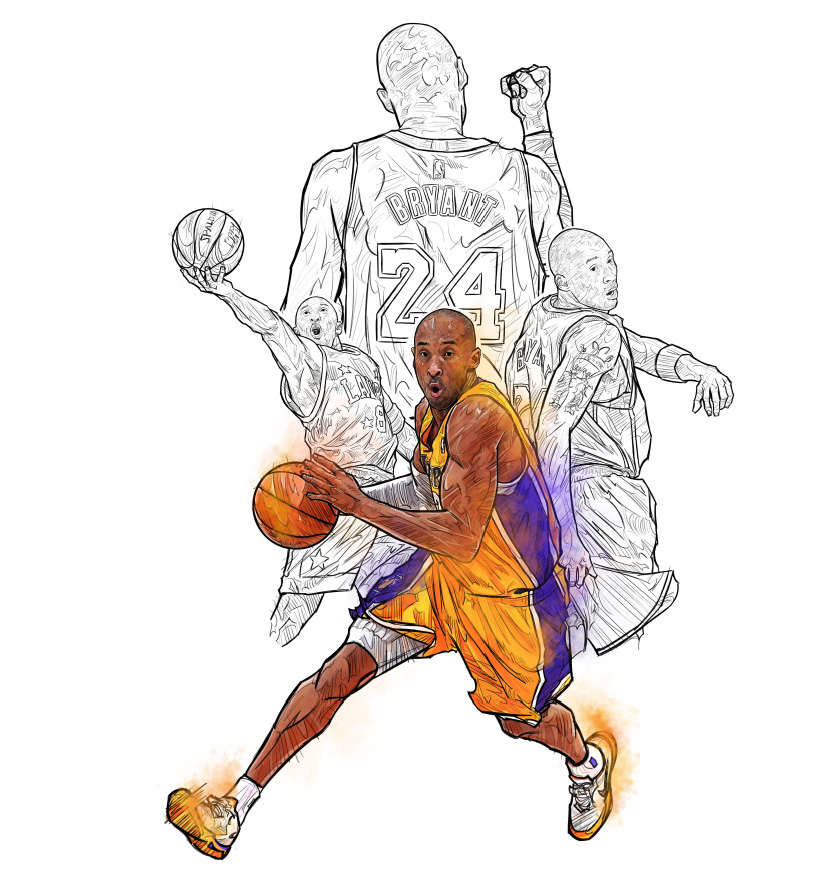 Also in the top 5 is another leader in the number of passes, Atlanta. On the other hand, New York and Phoenix prefer to throw to the detriment of passes.
Also in the top 5 is another leader in the number of passes, Atlanta. On the other hand, New York and Phoenix prefer to throw to the detriment of passes.
The percentage of assists seems to be distributed fairly evenly, but this is primarily due to small values. Only the top two teams make more than 11% of assists. It is not surprising to see Indiana and Utah as the leaders in the top discounts. The Pacers seem to have set up the Oladipo-Turner assembly line well, which was hampered by Victor's injury. At the bottom of the table are the same patients as in the %PASS graphs except for Pistons. Detroit discounts 2.26% more than average, entering the top 10 by this indicator, but only 8% of passes end in assists and here Detroit is ahead only of Cleveland.
Loading…
I forgot to correct the chart here, so the "lead" of Atlanta and Utah is actually the bottom two. In general, the graph correlates well with TOV%: the Hawks and Jazz occupy 30th and 25th places in it, and the leading Denver and San Antonio 11th and 2nd, respectively.
Loading…
Here the chart also had to be reversed. Fouls are mostly received in the New York area, with the Rockets joining them. But Utah is in the lead here without any reservations.
Brooklyn does not make the most free throws (all of Houston is only in fifth place). Moreover, the difference between them and Washington is the same as between the Wizards and the average. Among the outsiders are Portland and GSV, who simply make few attempts to pass themselves (I remind you that PTB are third from the end, GSV are the worst by a margin).
The last team graph is a bar chart with the accumulation of all team shots after passes, divided into seven types of shots. Here everyone can see the team he is interested in. It is not very convenient to do this, due to the unequal length of the columns (it would be better to convert the number of throws into frequency), but it is clear that Milwaukee most often completes passes with dunks, Indiana finger roll layups, and Brooklyn with floaters.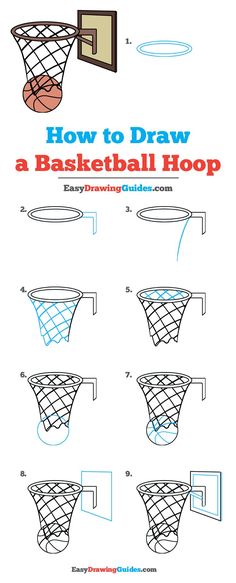
Loading…
From the teams, let's move on to the players and see from what distance, how accurately and how often NBA players throw after passes. To exclude 100% accurate shooters with one attempt, I set the filter to 100 shots made after passes. 9 got into the sample1 player.
Link to the full size chart.
The graph above shows what percentage of his throws the player makes after passes. The leaders are entirely guards, only Hollis-Jefferson can be classified as large. Dante Exum from Utah is the only one who makes more than half of the total. At the bottom of the list you can see people who just throw a lot and managed to meet the selection criteria of 100 throws, but at the same time neither throws after the pass nor the passes themselves are used as their main weapon.
Loading…
Link to full size chart
In terms of accuracy, two Milwaukee players lead the way. This is not surprising because as you can see from the following graph, both are in the top 10 for shortest average throw distances.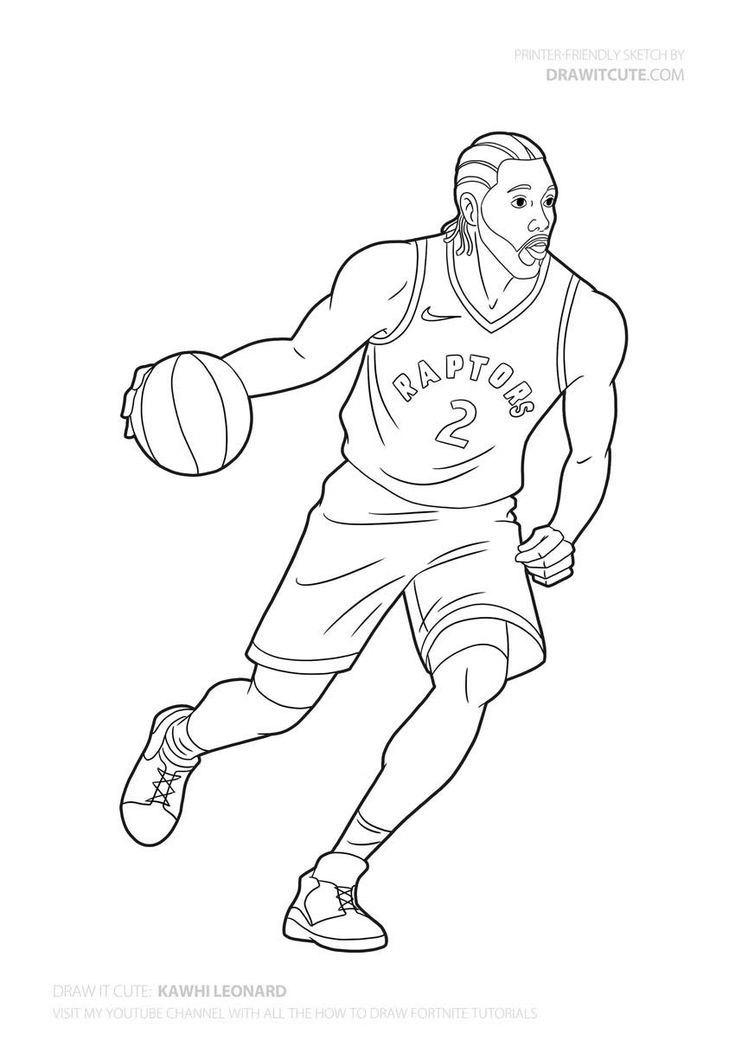 Durant is not in any tops, moreover, his average shot after the pass comes from almost 4 feet, but Kevin is third in accuracy. It's just that if he does something, he does it well. Also worth mentioning is Steph Curry. He's only 15th in accuracy, but given how far he throws (3rd in average range) this is commendable. For example, Satoranski throwing at about the same range is almost 15% less accurate (scatter plot). In general, when going from the furthest average throwing distance to the closest, only Durant and DeRozan, who are more than a foot closer to the basket, start to throw better than Curry. In this regard, things are pretty bad for Alonzo Trier and Russell Westbrook. Both have the shortest distance, but hang out only in the third ten in terms of accuracy. But even against this background, Tyreke Evans stands out, who, having 5 the shortest throw range, manages to make them the worst of all. Evans, with an accuracy below 40%, it makes sense to think about the need for such throws.
Durant is not in any tops, moreover, his average shot after the pass comes from almost 4 feet, but Kevin is third in accuracy. It's just that if he does something, he does it well. Also worth mentioning is Steph Curry. He's only 15th in accuracy, but given how far he throws (3rd in average range) this is commendable. For example, Satoranski throwing at about the same range is almost 15% less accurate (scatter plot). In general, when going from the furthest average throwing distance to the closest, only Durant and DeRozan, who are more than a foot closer to the basket, start to throw better than Curry. In this regard, things are pretty bad for Alonzo Trier and Russell Westbrook. Both have the shortest distance, but hang out only in the third ten in terms of accuracy. But even against this background, Tyreke Evans stands out, who, having 5 the shortest throw range, manages to make them the worst of all. Evans, with an accuracy below 40%, it makes sense to think about the need for such throws.
Link to full size chart
Loading…
Link to full size chart
In the end, I will do a little analysis of one player. Let's take Milwaukee leader Giannis Antetokounmpo as an example. To begin with, let's compare how his shots after passes are distributed in comparison with the average NBA player.
You can see from the chart that about a quarter of Giannis' throws after passes are dunks. This is very different from the average 5% in the League. Giannis also does finger roll layups more often than the other two types. He throws hooks less than average, and much less often both types of floaters. This picture fits in well with his accuracy and shooting distance, as well as his strengths as a basketball player: if you already gave Giannis time and space to pass, then get a dunk for highlights.
In regards to his score in passing play overall, Giannis, out of 109 players who have played at least 25 matches and made 5 passes or more in them, ranks 17th in passes per game, 33rd in number of shots, but first in their accuracy.